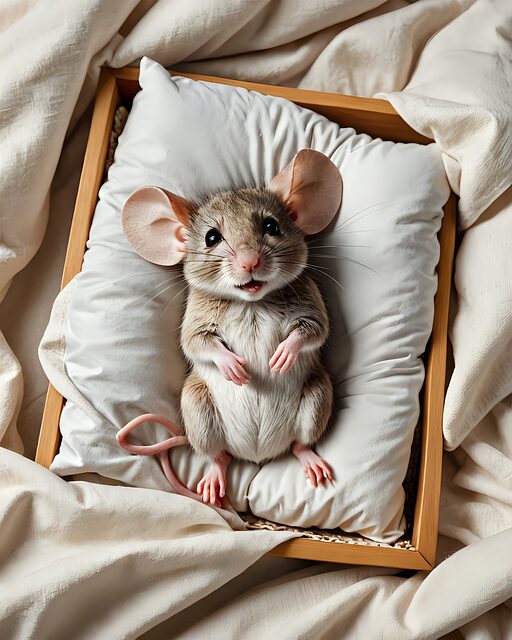Rodents like mice and rats are attracted to food, water, and shelter, making them a common pest in homes and buildings. Professional rodent removal focuses on eliminating these attractants through cleanliness, secure food storage, proper waste management, sealing entry points, and improved ventilation. By removing sources of food and shelter, professionals create an inhospitable environment, preventing long-term rodent issues. Effective prevention involves identifying and eliminating attractants, regular cleaning, and using professional techniques like baiting systems and non-toxic repellents. Securing the space post-removal through sealing entry points, deep cleaning, and maintaining a clutter-free environment significantly reduces future infestations.
Tired of sharing your space with unwelcome visitors? Understanding and addressing rodent attractants is crucial for effective professional rodent removal. This guide equips you with insights into rodent behavior, helping you identify common attractants in your environment. We provide proven strategies for professional rodent control and essential preventive measures to secure your space long after the problem is solved. Say goodbye to rodents and reclaim your living or working area with these expert tips on professional rodent removal.
Understanding Rodent Behavior and Their Attraction to Spaces
Rodents, such as mice and rats, are highly adaptable creatures with a keen sense of smell and hearing. Understanding their behavior is crucial when it comes to professional rodent removal. These animals are attracted to spaces that offer food, water, and shelter, making homes and commercial buildings prime targets. They can enter through tiny cracks and gaps, often seeking out sources of moisture and organic matter left behind in kitchens or areas with poor sanitation.
Professional rodent control involves identifying and eliminating these attractants. This includes maintaining a clean environment by promptly cleaning up spills, storing food in airtight containers, and ensuring proper waste management. Sealing entry points and improving ventilation can also deter rodents from entering. By removing the elements that draw them in, professional rodent removal services can effectively create an unsuitable habitat for these pests, leading to successful long-term prevention.
Identifying Common Rodent Attractants in Your Environment
Rodents are attracted to a variety of elements in our living and working spaces, making professional rodent removal a common need. Identifying these attractants is the first step in effective prevention. Common sources include food debris, water leaks, and shelter options like cracks, holes, or undisturbed areas. Even seemingly innocuous items like pet food bowls left out, stored groceries, or piles of newspapers can draw rodents due to their nutritional value and potential hiding spots.
Professionals in rodent control recommend a thorough inspection to pinpoint these attractants. Once identified, it’s crucial to eliminate them by securing food tightly, repairing leaks, sealing entry points, and maintaining a clean environment. Regular maintenance and awareness are key strategies in professional rodent removal, ensuring your space remains unappealing to these unwanted visitors.
Implementing Effective Strategies for Professional Rodent Removal
Implementing effective strategies for professional rodent removal is key to maintaining a pest-free environment. The first step involves identifying and eliminating sources of food, water, and shelter that attract rodents. This includes securing trash cans with tight-fitting lids, storing food in airtight containers, and sealing entry points like gaps around pipes or wires. Regular cleaning and sanitation practices are also crucial, as even small amounts of food residue can entice these pests.
Additionally, employing professional pest control services is highly recommended for thorough and safe removal. Experts use advanced techniques such as baiting systems and non-toxic repellents to target rodents effectively without causing harm to humans or pets. They also offer ongoing prevention strategies, ensuring your space remains rodent-free in the long term.
Preventive Measures: Securing Your Space Post-Rodent Control
After successfully implementing professional rodent removal services, the next crucial step is securing your space to prevent future infestations. This involves a multi-faceted approach that goes beyond simply cleaning up attractants. Start by sealing all entry points—cracks, gaps, and holes—with appropriate materials like steel wool or caulk. Ensure windows and doors are fitted with tight-sealing screens, especially in areas where rodents might enter. Regularly inspect your space for any signs of damage or potential entry points, addressing them promptly.
Additionally, maintaining a clean and clutter-free environment is vital. Store food in airtight containers, quickly clean up spills, and properly dispose of garbage. Professional pest control experts recommend regular deep cleaning to remove any remaining odors or traces that might attract rodents. By combining these preventive measures with ongoing monitoring, you can significantly reduce the risk of future rodent infestations, ensuring a safer, more secure living or working environment.
In light of the above, it’s clear that addressing rodent attractants and implementing professional rodent removal strategies is essential for creating a clean, safe environment. By understanding their behavior, identifying common attractants, and employing effective control methods, you can prevent future infestations. Remember that proactive measures, such as securing your space post-removal, are crucial to maintaining a rodent-free environment. With these steps, you’ll be well on your way to a pest-free haven.
